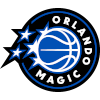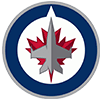Previously, I just projected rookie running by going off an average production level. There didn't seem to be any measurable production differences between early and late picks.
One item that really bothered me about this analysis was team context. The rookie running backs who got the most work were likely on teams who needed their help. These teams were bad and the running back's production likely suffered from a bad supporting cast. I was looking for a way to add some overall team context and I may have found an answer in Las Vegas.
For years, fans have been able to bet the over/under on a team's wins. SportsOddsHistory.com collected all the preseason expectations from 2001 to 2017. While not a perfect proxy for team talent, it's a starting point. And I have 17 years of data to match up.
I decided to group the preseason odds into three groups:
1. More than nine wins
2. Seven to nine wins
3. Fewer than seven wins
The seven-to-nine
Previously, I just projected rookie running by going off an average production level. There didn't seem to be any measurable production differences between early and late picks.
One item that really bothered me about this analysis was team context. The rookie running backs who got the most work were likely on teams who needed their help. These teams were bad and the running back's production likely suffered from a bad supporting cast. I was looking for a way to add some overall team context and I may have found an answer in Las Vegas.
For years, fans have been able to bet the over/under on a team's wins. SportsOddsHistory.com collected all the preseason expectations from 2001 to 2017. While not a perfect proxy for team talent, it's a starting point. And I have 17 years of data to match up.
I decided to group the preseason odds into three groups:
1. More than nine wins
2. Seven to nine wins
3. Fewer than seven wins
The seven-to-nine group is the average team projection while the other two are seen as better or worse than average. By using the three groupings, a distinct separation can be seen. I'll start with the rookie running backs.
Running Backs
For running backs, I split them by backs drafted in the first three rounds and then those drafted later. These two groups then got divided into the three win categories. Here are the results.
Note: I used rookies drafted in the first 96 picks (32 x 3) to represent the first three rounds.
| PROJ. TEAM WINS | YDS/RUSH | TD/RUSH | FUMBLE/TOUCH | REC/TRG | YDS/REC | TD/REC | AVG PICK |
| First Three Rounds | |||||||
| >9 Wins | 4.4 | 2.87% | 0.92% | 77.22% | 8.2 | 1.87% | 57 |
| 7-9 Wins | 4.3 | 3.01% | 0.70% | 74.54% | 8.3 | 3.06% | 49 |
| <7 Wins | 4.1 | 2.51% | 0.73% | 72.08% | 8.4 | 2.52% | 39 |
| Fourth Round or Later | |||||||
| >9 Wins | 4.1 | 1.99% | 1.06% | 69.59% | 7.1 | 3.15% | 161 |
| 7-9 Wins | 4.0 | 2.56% | 0.59% | 72.05% | 8.0 | 3.07% | 163 |
| <7 Wins | 4.0 | 2.47% | 0.91% | 69.67% | 7.5 | 1.90% | 155 |
There is a lot going on, but here are some highlights.
• The bad-team running backs were taken earlier in the drafts and performed worse. Of the backs taken in the first three rounds, the ones taken by projected winning teams had a distinctive advantage in yards per carry.
• The backs drafted early by bad teams had similar yards per carry compared to backs drafted by winning teams more than 120 rounds later.
• As previously researched, the backs drafted earlier are better receivers with higher completion rates and yards per completion.
Wide Receivers
With wide receivers, I divided the results into the same six groups and here are the results.
| PROJ. TEAM WINS | REC/TRG | YDS/REC | TD/REC | FUMBLE/TOUCH | AVG PICK |
| First Three Rounds | |||||
| >9 Wins | 58.41% | 14.0 | 8.63% | 1.51% | 44 |
| 7-9 Wins | 56.12% | 13.1 | 8.30% | 1.55% | 48 |
| <7 Wins | 50.60% | 14.1 | 8.41% | 1.13% | 44 |
| Fourth Round or Later | |||||
| >9 Wins | 60.70% | 11.0 | 7.37% | 1.62% | 153 |
| 7-9 Wins | 54.25% | 12.8 | 6.95% | 2.59% | 168 |
| <7 Wins | 50.32% | 12.7 | 6.48% | 2.34% | 154 |
The completion percentage is rather stark with a 10 percent spread for receivers drafted after the third round. A lot of this difference likely comes down to the quarterback play as I recently researched. Bad overall teams usually have bad quarterbacks. And it's time to move onto those quarterbacks.
Quarterbacks
Hopefully, owners don't have to use rookie quarterbacks, as their historical production is horrible compared to the rest of the league's starters.
| PROJ. TEAM WINS | COMP% | YDS/COMP | TD/COMP | INT/ATT | AVG PICK |
| First Three Rounds | |||||
| >9 Wins | 60.6% | 10.9 | 5.1% | 2.2% | 62 |
| 7-9 Wins | 57.1% | 11.7 | 6.7% | 3.5% | 31 |
| <7 Wins | 57.1% | 11.4 | 5.5% | 3.2% | 21 |
| Fourth Round or Later | |||||
| >9 Wins | 53.9% | 12.1 | 9.1% | 3.7% | 183 |
| 7-9 Wins | 55.8% | 10.8 | 5.3% | 3.3% | 153 |
| <7 Wins | 53.5% | 10.4 | 4.3% | 4.8% | 152 |
A couple items really stick out. Of the quarterbacks drafted in the first three rounds, those on projected good teams had similar production to those on bad teams, but the ones on bad teams went 40 picks earlier. Second, the only noticeable trend is the lower completion percentage of the quarterbacks taken later.
Conclusion
Team context matters when creating a rookie's projection. That statement isn't ground shattering. The key is how much to adjust projections based on the team context.
For running backs, it's +/- 0.2 yards per carry likely based on the offensive line.
For wide receivers, their catch rate can vary +/- 5 percent.
Additionally, these projections help to cap expectations on certain players. In the confusing world of rookie projections, hopefully, this provides some guidance.
For reference, here are the projections for the top-25 rookies being drafted at FanTrax. The assumptions are:
• Running backs: Total yards and touchdowns projected from 250 carries and 40 targets
• Wide receiver: Receiving yards and touchdowns projected from 120 targets
• Quarterbacks: Passing yards and touchdowns projected from 500 targets
| PLAYER | TEAM | POS | DRAFT POS | PROJ. WINS | YARDS | TD |
| Saquon Barkley | NYG | RB | 2 | 7 | 1,319 | 8.7 |
| Rashaad Penny | SEA | RB | 27 | 8 | 1,319 | 8.7 |
| Royce Freeman | DEN | RB | 71 | 7 | 1,319 | 8.7 |
| Sony Michel | NE | RB | 31 | 11 | 1,357 | 7.9 |
| Ronald Jones II | TB | RB | 38 | 6.5 | 1,270 | 7.3 |
| Kerryon Johnson | DET | RB | 43 | 7.5 | 1,319 | 8.7 |
| Nick Chubb | CLE | RB | 35 | 5.5 | 1,270 | 7.3 |
| Calvin Ridley | ATL | WR | 26 | 9 | 881 | 5.6 |
| D.J. Moore | CAR | WR | 24 | 9 | 881 | 5.6 |
| Michael Gallup | DAL | WR | 81 | 8.5 | 881 | 5.6 |
| Nyheim Hines | IND | RB | 104 | 6.5 | 1,203 | 6.9 |
| Christian Kirk | ARI | WR | 47 | 5.5 | 854 | 5.1 |
| Anthony Miller | CHI | WR | 51 | 6.5 | 854 | 5.1 |
| Courtland Sutton | DEN | WR | 40 | 7 | 881 | 5.6 |
| James Washington | PIT | WR | 60 | 10.5 | 984 | 6 |
| Jordan Wilkins | IND | RB | 169 | 6.5 | 1,203 | 6.9 |
| Baker Mayfield | CLE | QB | 1 | 5.5 | 3,248 | 15.7 |
| Lamar Jackson | BAL | QB | 32 | 8 | 3,348 | 19.1 |
| Kalen Ballage | MIA | RB | 131 | 6.5 | 1,203 | 6.9 |
| Keke Coutee | HOU | WR | 103 | 8.5 | 832 | 4.5 |
| Dante Pettis | SF | WR | 44 | 8.5 | 881 | 5.6 |
| Tre'Quan Smith | NO | WR | 126 | 9.5 | 802 | 5.4 |
| Josh Allen | BUF | QB | 7 | 6 | 3,248 | 15.7 |
| Chase Edmonds | ARI | RB | 134 | 5.5 | 1,203 | 6.9 |
| Bo Scarbrough | DAL | RB | 236 | 8.5 | 1,240 | 7.6 |



























